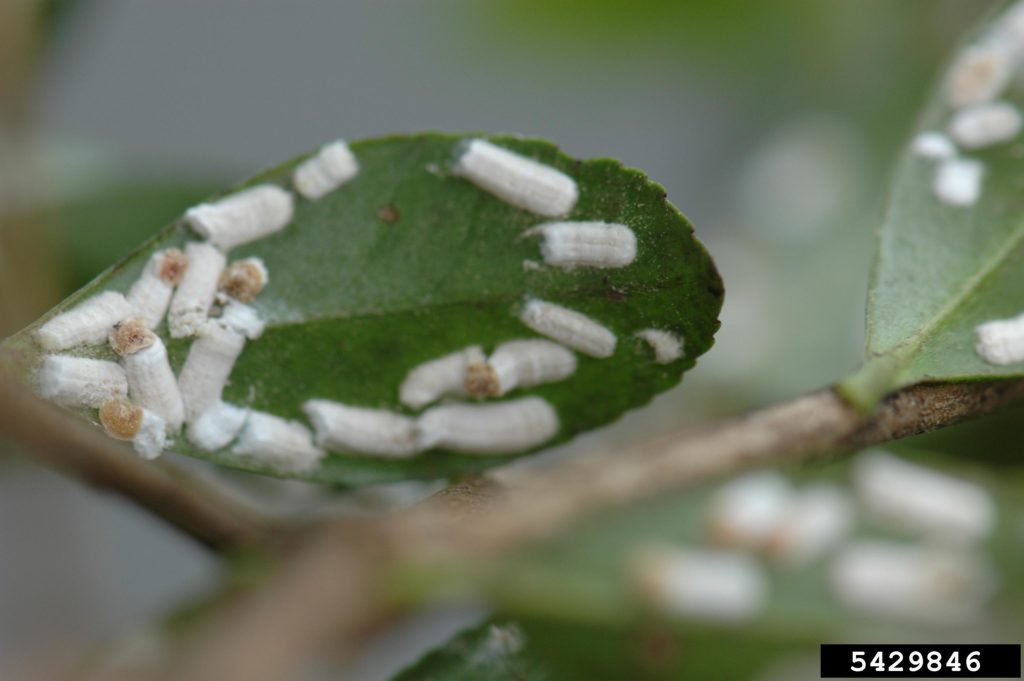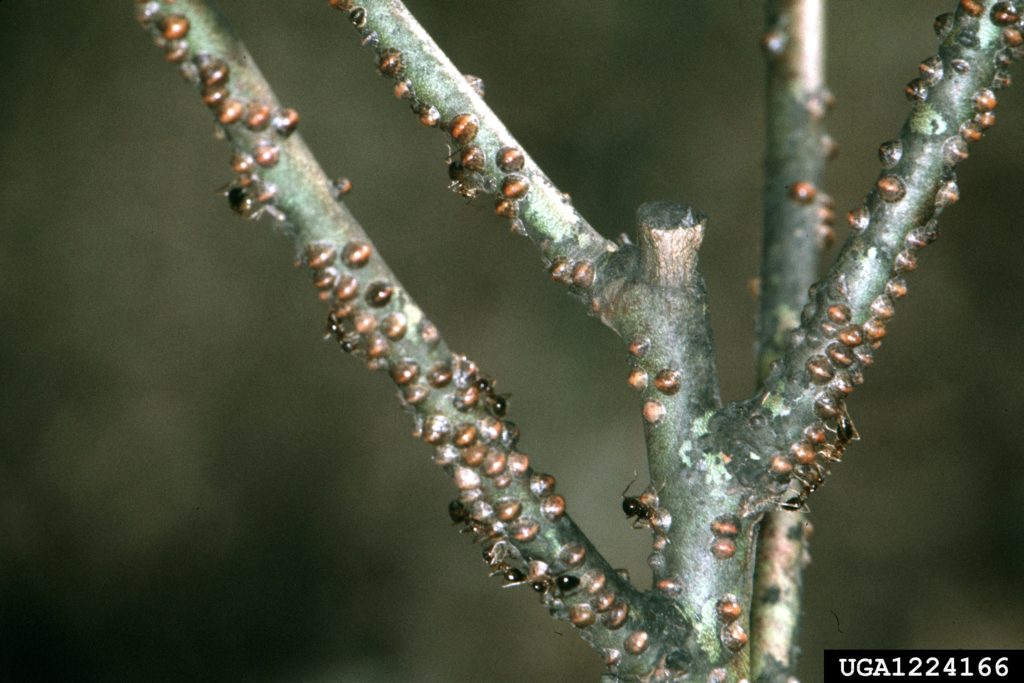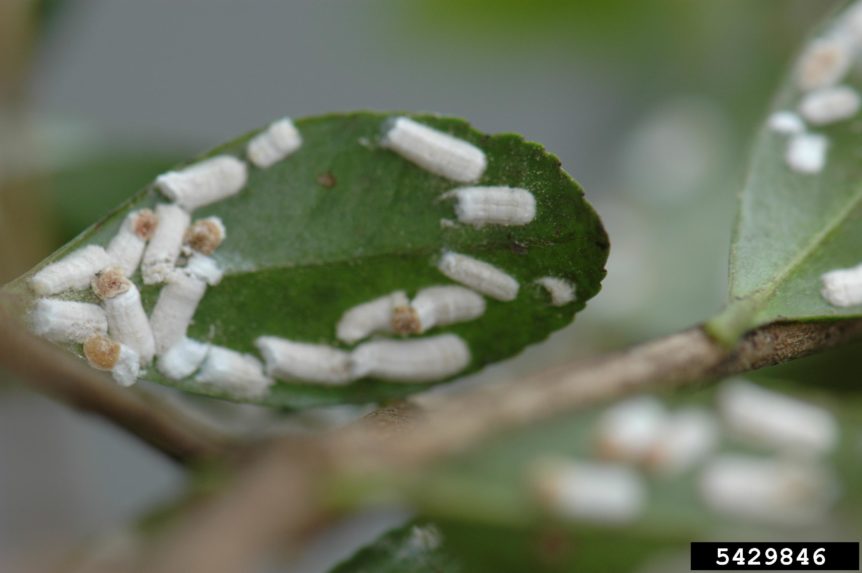
Scale insects can cause blueberry damage in several ways. The tiny pests suck plant sap out of foliage. In high enough numbers, scale can weaken the vigor and growth of blueberries. The pests also excrete honeydew, which can produce sooty mold on the plant and fruit. In excess amounts, honeydew and sooty mold can reduce the grade of fruit or render it unmarketable.
Lorena Lopez, assistant Extension professor of entomology and plant pathology with NC State University, recently published a paper on scale management. This article features some of the key take-home messages from the paper.
Identification
There are several species of scale that feed on blueberries, including Pulvinaria ericicola and P. floccifera. P. floccifera isalso known as the cottony scale. The terrapin scale, Mesolecanium nigrofasciatum, is an occasional pest of tree fruits and shrubs throughout much of the southern and eastern United States.
Cottony scale can be easily seen in plants when adult females produce egg sacks in late spring. However, overwintering immature stages are the most vulnerable and ideally the ones that should be targeted with insecticides. Terrapin scale populations can be detected at any time during the year, but they are most conspicuous in late summer when sooty mold coats the foliage or in autumn after the leaves have fallen. Young scale can also be found earlier in the summer by examining the undersides of leaves.
Since scale insects feed by removing sap from a plant, foliage with scale infestations may turn yellowish or pale in color, which can reduce vigor, decrease yield and even shorten the lifespan of infested bushes. Heavy infestations also produce large quantities of honeydew. This sugary waste product often coats the foliage, fostering growth of a sooty mold that blocks light and reduces the plant’s photosynthetic efficiency.

Photo by Jerry Payne
Management
Annual and selective pruning of old and diseased wood can suppress populations of scale insects and blueberry bud mites. This is a cultural control that can help manage light or scattered infestations.
Sanitation is a critical cultural control to reduce the spread of scale. Scale crawlers can be moved by wind, farming equipment and workers in the field. Farming equipment, such as mechanical pruners and harvesters, should be thoroughly cleaned before moving to new fields. Workers should inspect their clothing before entering a new field.
Scales are very difficult to control during the blueberry season because the pest’s covering protects it from most chemistries. The best results are obtained when applications are timed to coincide with the active period of the crawlers (winter or early spring) or when dormant oil sprays are applied. Dormant oil sprays are commonly used in North Carolina blueberries during October–November when leaves fall.
Temperatures should not be below 50°F or above 65°F when spraying dormant oils. This is usually for low to moderate infestations. For high infestations (multiple areas with plants covered in scales), systemic insecticides will be needed in addition to oil sprays. Systemic insecticides are better applied after harvest or before bud break. Follow product labels, which may say not to spray certain plant species or mix oil with certain other products. Systemic insecticides that could help mitigate scale insect infestations include Movento, Sivanto Prime, Admire Pro, Assail and Knack.










